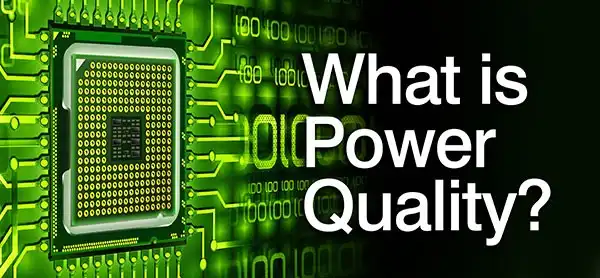Power Quality Issues
Currently, the reliability and quality of electric power are widely debated concerns in the power business. There exist a multitude of quality concerns and problems, each of which may have different and varied origins. Power Quality problems that customers may encounter are characterised based on the distortion of the voltage waveform. The electrical system experiences various types of disturbances, including transients (brief changes in voltage), short duration variations such as sags, swells, and interruptions, long duration variations like sustained interruptions, under voltages, and over voltages, voltage imbalance, waveform distortion (such as dc offset, harmonics, inter harmonics, notching, and noise), voltage fluctuations, and power frequency variations. Three Power Quality issues that are of significant concern to customers are voltage sags, harmonics, and transients.
Power quality can be conceptualised as a compatibility issue between the equipment connected to the grid and the events occurring on the grid. Compatibility issues typically possess a minimum of two potential resolutions, namely rectifying the power source or fortifying the device.

Both electric utilities and end users of electrical power are experiencing a growing level of apprehension regarding the standard of electric power. Electrical power quality (PQ) refers to the extent of divergence from the standard values of voltage magnitude and frequency. PQ can be described as the extent to which the utilisation and delivery of electric power impact the performance of electrical equipment. From the viewpoint of a customer, a PQ problem refers to any power issue that is evident in variations in voltage, current, or frequency, leading to power outage or malfunctioning of client equipment.
Why conduct a power quality audit?
Newer generation load equipment, equipped with microprocessor-based controllers and power electronic devices, exhibit increased sensitivity to power quality changes.
- Every user must have an enhanced awareness of power quality issues. Examples of these disturbances include interruptions, voltage sags, and switching transients.
- Numerous entities are currently integrated within a network. The failure of any component has greater repercussions.
Power quality issues can lead to significant financial losses, up to billions of dollars. An entire new industry has emerged to examine and rectify these issues.
The growing emphasis on power efficiency has led to a steady increase in application. Examples include high-efficiency changeable speed motor drives and capacitors used for power factor adjustment. These leads in an increase in harmonic levels, which impair the power quality.
Power quality problems
Within an electrical power system, a multitude of PQ disturbances exist. Measurement findings and electromagnetic events, which might lead to PQ difficulties, rely on the classification of categories and their corresponding descriptions. The categories can be classified as follows:
- Voltage variations of brief duration b. Voltage variations of extended duration c. Abrupt changes in voltage d. Unequal distribution of voltage e. Deformation of voltage waveform f. Irregular changes in voltage g. Variations in power frequency
Resolutions for Power Quality Issues
PQ problem mitigation can occur at various levels, including gearbox, distribution, and end-use equipment.
Grid adequacy
Several PQ issues arise from the transmission or distribution grid. Therefore, it is crucial to have a well-designed and well-maintained transmission and distribution grid in order to minimise the occurrence of power quality (PQ) issues.
ENERGY storage Systems for distributed resources
The interest in utilising distributed energy resources (DER) has significantly grown in recent years due to their potential to enhance reliability. The resources encompass distributed generation and energy storage technologies.
Energy storage systems, often referred to as restorative technologies, are utilised to provide electric loads with the ability to withstand and continue operating in a low power quality environment.
The latest advancements in power electronics and storage technologies have made restorative technologies a top-tier solution for mitigating power quality (PQ) issues.
The initial energy storage device employed in the domain of power quality (PQ), and still widely utilised today, is the electrochemical battery. Despite the presence of newer technologies, many technologies continue to dominate the market due to their affordability and well-established technology.
Power Quality concerns are undesirable occurrences that are inevitable but can be mitigated by many strategies, including those that have been described and others. There is no single mitigation strategy that is universally acceptable for every application. Additionally, power supply utilities make efforts to provide enhanced Power Quality. Power Quality problems cannot be completely eradicated, but they can be mitigated and efforts can be made to prevent their occurrence. To prevent Power Quality issues, it is crucial to ensure that any equipment being installed in industrial plants is compatible with the Power Quality of the power supply. To accomplish this, one must have equipment that possesses appropriate technical parameters, which include Power Quality performance in its electrical operating environment.



